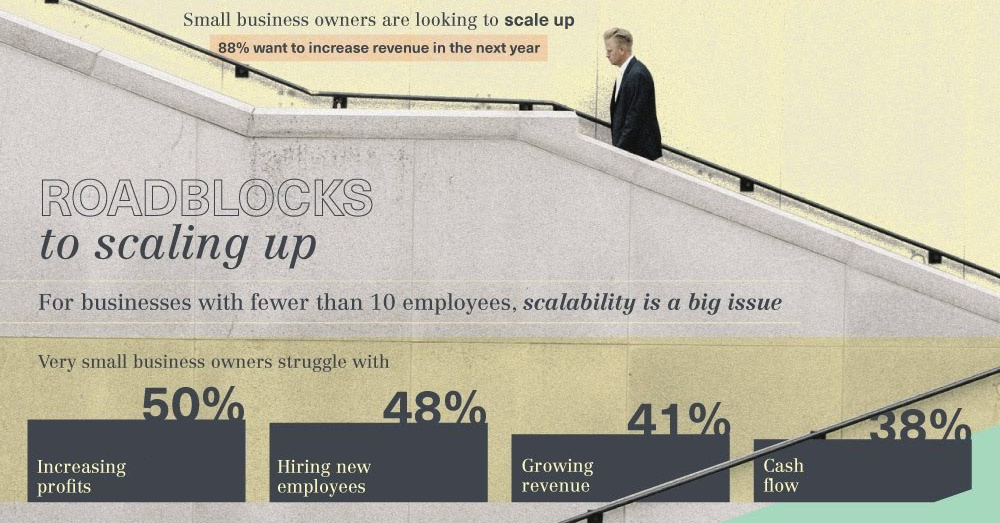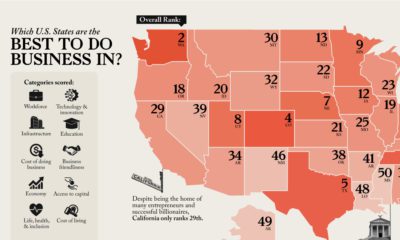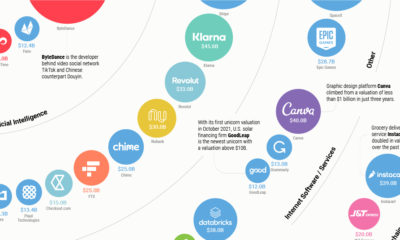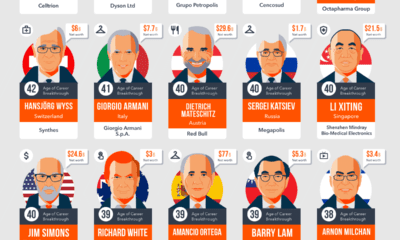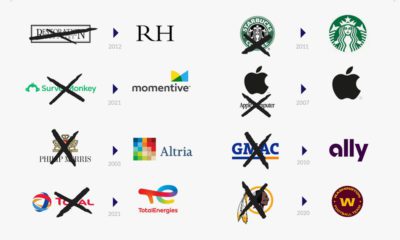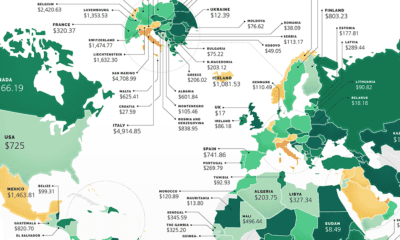Whether they operate a family-run business or a rapidly evolving tech startup, there is always another milestone in sight. Business owners want to their companies to make an impact with their customers and communities, and they want to keep honing their craft. But with 27.9 million small businesses in the United States alone, there is no shortage of competition for the same pieces of the pie. How can you take steps in scaling your business, and do what your competitors are not willing to do?
Roadblocks to Scale
Today’s infographic comes to us from Brunner Consulting, and it breaks down common roadblocks to scaling as well as potential solutions to the problem of decision fatigue. To begin, we’ll look at a poll of U.S. small business owners, which gives perspective on the challenges most often faced by companies with fewer than 10 employees:
Profitability (50%) Hiring new employees (48%) Growing revenue (41%) Cash flow (38%)
Unless a business has deep pocketbooks or is venture-backed, there are several obstacles here that may prevent companies from scaling successfully. A lack of profitability is an obvious limitation, but it’s also clear that revenue growth, cash flow, and adding new employees can be growing pains that may derail any long-term plans.
Decision Fatigue
Why is scaling your business so challenging? It’s because most types of businesses are not really scalable to begin with. The only sustainable way to scale for most companies is to grow revenue while decreasing operating costs, and for many traditional small businesses (i.e. bakeries, restaurants, hardware stores, consulting, etc.) this can be incredibly difficult. Even if you come up with a scalable business model, there is yet another obstacle that can prevent your from growing the right way: decision fatigue. In a growing and evolving company, entrepreneurs can’t do everything – and when they try to make every big and small decision, it affects the quality of those decisions. It can lead to being unnecessarily risk averse, maintaining the status quo, or even avoiding decisions altogether.
Scaling Your Business: First Steps
For a business to grow, there has to be more than one decision-maker. There are two main routes to this:
- Delegate Responsibility In a typical small business, employees find and diagnose problems, while owners focus on solving them. However, by delegating these day-to-day decisions to employees, it frees up owners to work on the big picture items that can fuel growth.
- Play to Your Strengths Entrepreneurs can’t do it all, so it’s best to play to your strengths. To do this, outsource business departments that are outside of your wheelhouse. Often those may include things like bookkeeping, marketing, customer service, or website design. Decentralizing decision-making is one of the first steps in scaling your business – and no matter how you do this, it frees you to focus on the big problems. on But fast forward to the end of last week, and SVB was shuttered by regulators after a panic-induced bank run. So, how exactly did this happen? We dig in below.
Road to a Bank Run
SVB and its customers generally thrived during the low interest rate era, but as rates rose, SVB found itself more exposed to risk than a typical bank. Even so, at the end of 2022, the bank’s balance sheet showed no cause for alarm.
As well, the bank was viewed positively in a number of places. Most Wall Street analyst ratings were overwhelmingly positive on the bank’s stock, and Forbes had just added the bank to its Financial All-Stars list. Outward signs of trouble emerged on Wednesday, March 8th, when SVB surprised investors with news that the bank needed to raise more than $2 billion to shore up its balance sheet. The reaction from prominent venture capitalists was not positive, with Coatue Management, Union Square Ventures, and Peter Thiel’s Founders Fund moving to limit exposure to the 40-year-old bank. The influence of these firms is believed to have added fuel to the fire, and a bank run ensued. Also influencing decision making was the fact that SVB had the highest percentage of uninsured domestic deposits of all big banks. These totaled nearly $152 billion, or about 97% of all deposits. By the end of the day, customers had tried to withdraw $42 billion in deposits.
What Triggered the SVB Collapse?
While the collapse of SVB took place over the course of 44 hours, its roots trace back to the early pandemic years. In 2021, U.S. venture capital-backed companies raised a record $330 billion—double the amount seen in 2020. At the time, interest rates were at rock-bottom levels to help buoy the economy. Matt Levine sums up the situation well: “When interest rates are low everywhere, a dollar in 20 years is about as good as a dollar today, so a startup whose business model is “we will lose money for a decade building artificial intelligence, and then rake in lots of money in the far future” sounds pretty good. When interest rates are higher, a dollar today is better than a dollar tomorrow, so investors want cash flows. When interest rates were low for a long time, and suddenly become high, all the money that was rushing to your customers is suddenly cut off.” Source: Pitchbook Why is this important? During this time, SVB received billions of dollars from these venture-backed clients. In one year alone, their deposits increased 100%. They took these funds and invested them in longer-term bonds. As a result, this created a dangerous trap as the company expected rates would remain low. During this time, SVB invested in bonds at the top of the market. As interest rates rose higher and bond prices declined, SVB started taking major losses on their long-term bond holdings.
Losses Fueling a Liquidity Crunch
When SVB reported its fourth quarter results in early 2023, Moody’s Investor Service, a credit rating agency took notice. In early March, it said that SVB was at high risk for a downgrade due to its significant unrealized losses. In response, SVB looked to sell $2 billion of its investments at a loss to help boost liquidity for its struggling balance sheet. Soon, more hedge funds and venture investors realized SVB could be on thin ice. Depositors withdrew funds in droves, spurring a liquidity squeeze and prompting California regulators and the FDIC to step in and shut down the bank.
What Happens Now?
While much of SVB’s activity was focused on the tech sector, the bank’s shocking collapse has rattled a financial sector that is already on edge.
The four biggest U.S. banks lost a combined $52 billion the day before the SVB collapse. On Friday, other banking stocks saw double-digit drops, including Signature Bank (-23%), First Republic (-15%), and Silvergate Capital (-11%).
Source: Morningstar Direct. *Represents March 9 data, trading halted on March 10.
When the dust settles, it’s hard to predict the ripple effects that will emerge from this dramatic event. For investors, the Secretary of the Treasury Janet Yellen announced confidence in the banking system remaining resilient, noting that regulators have the proper tools in response to the issue.
But others have seen trouble brewing as far back as 2020 (or earlier) when commercial banking assets were skyrocketing and banks were buying bonds when rates were low.
